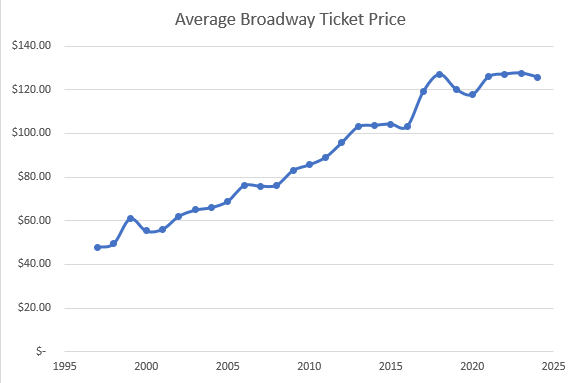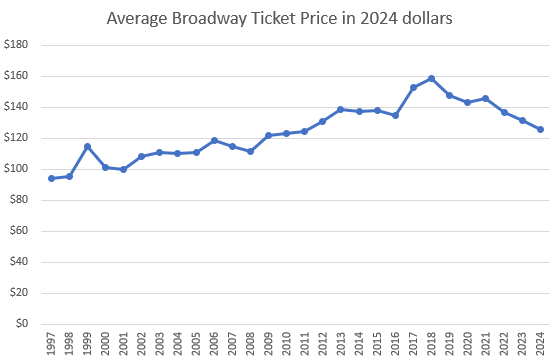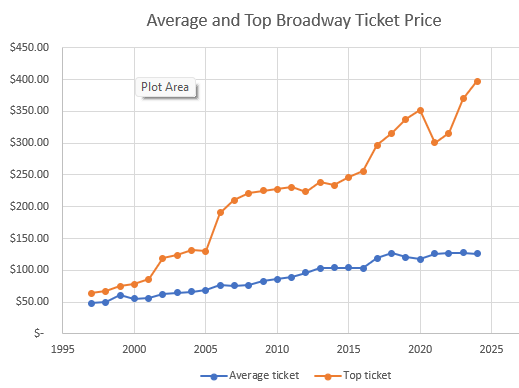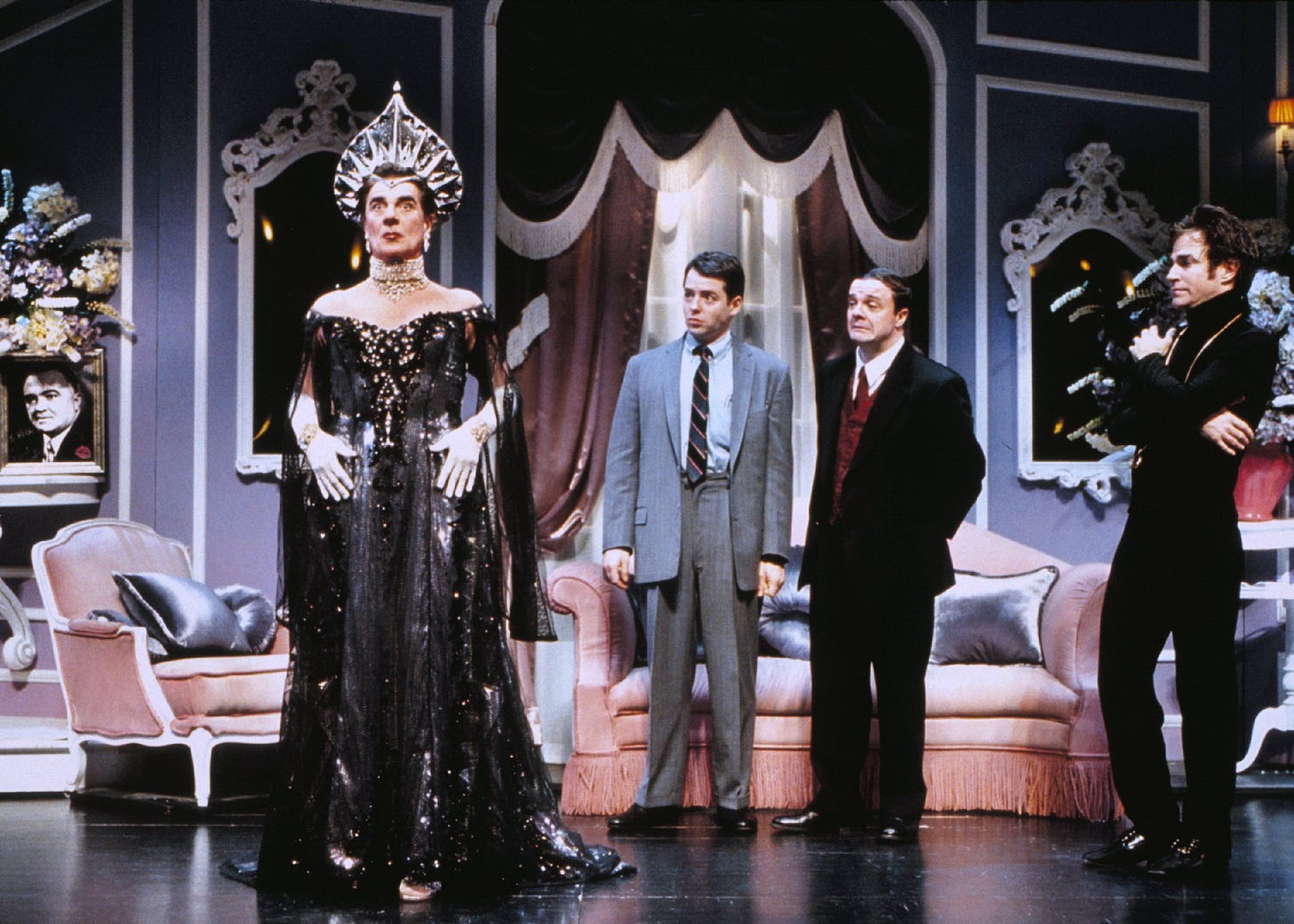Five Facts About Broadway Ticket Prices
Fact #4 Will Surprise You!!!
Broadway isn’t just entertainment—it’s big business. And behind the curtain of glittering lights and standing ovations lies a fascinating economic story. I recently dove into the data found at Broadway World on ticket prices since 1997. I came away with five takeaways about Broadway ticket prices in 2025.
While some trends may confirm what you suspect, others offer surprising insights into today’s Broadway ticket prices. I also recorded a video discussing this, which you can find at the end of this article.
Let’s dive in with five facts about Broadway ticket prices
#1: Broadway Ticket Prices Have Risen Since the 1990s
In 1997, the average Broadway ticket cost about $48. Fast forward to 2024, and that number has climbed to around $126. That’s a jump of over 160%. People know that Broadway isn’t cheap, so this likely isn’t a huge surprise.
#2 Broadway Ticket Prices Have Risen More Than Inflation
It’s not just nominal price increases. When adjusted for inflation using the Consumer Price Index (CPI), the 1997 average ticket would be about $94 in today’s dollars. Given they are $126 today, that means prices have risen significantly in real terms, too. In other words, Broadway prices over the past 30 years are not just keeping up with the cost of living—they have been outpacing it.
#3: Premium Ticket Prices Have Skyrocketed
The real shocker? It’s in the top-end tickets.
In 1997, the priciest seats went for about $124 (in today’s dollars). By 2024, premium ticket prices are averaging around $400. These are often the best seats for blockbuster shows—but many less popular productions now offer premium-priced options, and some theatergoers are willing to pay top dollar without blinking.
This reflects a smart pricing strategy: charge more to those who are willing and able to pay.
#4: Ticket Prices Have Fallen Since 2018 (Inflation-Adjusted)
Here’s something that may surprise you: While prices have increased since 1997, Broadway ticket prices have declined in recent years. In 2018, the average ticket was $127 (not inflation-adjusted), one dollar higher than the 2024 average of $126.
That doesn’t sound too bad, until you adjust for inflation. When adjusting for inflation, the average ticket price has dropped from nearly $160 in 2018 to $126 in 2024. That’s a massive decrease—and a financial strain on productions, since fixed costs (like actor salaries, theater rentals, set costs, etc.) have not been decreasing.
#5: Everyday Tickets Are More Affordable Than You Think
One important clarification that is needed: the average price includes high-end, premium tickets. Many people or families - and I’m in this camp - don’t spend money on the premium priced tickets. We buy what we’ll call a typical ticket. If we focus on the typical ticket—what most people are actually paying?
When we remove the top 5% of ticket prices (the most expensive ones), the average ticket in 2024 comes out to $106. In 1997, that same average ticket (adjusted for inflation) was about $88. That’s still an increase, but a more modest increase over the past 30 years.
This tells us that Broadway is price discriminating effectively—a term in economics that simply means charging different prices to different people based on their willingness to pay. It helps keep shows accessible to everyday fans, while still capturing revenue from premium buyers.
Broadway’s Pricing Strategy Is Economics in Action
Broadway theaters are responding to economic incentives—balancing the need to attract a broad audience while also maximizing revenue from their most devoted fans. These pricing patterns reflect core economic principles, from supply and demand to inflation, price discrimination, and consumer surplus.
For more, watch the video!









With all that data, I'm curious if you could tease out an elasticity of demand for Broadway shows? I'd be especially curius of the difference for typical tickets and premium ones.